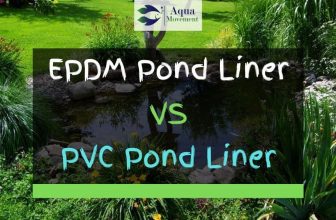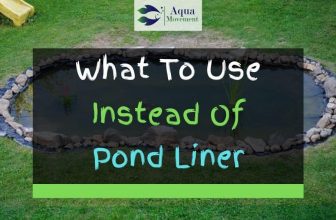How to Breed Koi Fish – Step By Step Guide
Koi fish can be a wonderful addition to any backyard pond. With all their color and liveliness, they are sure to inject some extra purpose and activity into the right pond.
You can be sure that an active and well-maintained koi pond is bound to excite some compliments and interest from your guests, as well as bring a lot of joy and contentment to the owner.
However, creating a healthy and happy koi community depends upon you breeding them in the correct way. This can be easier said than done. Thankfully though, koi fish have been bred domestically now for many centuries, so there has been a lot of experience and lessons collected about how best to breed these popular fish.
In this comprehensive article, we will distill all these lessons into a few basic guidelines that you should follow if you want to learn how to breed koi fish.
Table of Contents
Select a Suitable Breeding Pair
Video: “How Baby KOI FISH Are SELECTED – Koi Selection In Japan [BREEDER GUIDE]”
The first stage of any successful breeding program is to select a suitable breeding pair. This should be a pair of koi fish (one male and one female), who are sexually mature and who possess the attractive offspring that you want to pass on to their offspring. For example, these may be their bright, vivid coloring, or their specific fin arrangement.
It is important to choose fish that look hale and healthy, because any predisposition to illness or genetic deficiency is likely to be passed on to the next generation of fish. This could be detrimental to the long-term health of your ecosystem.
Just choosing a male and female pair can be a difficult task, especially for the inexperienced koi breeder. This is because the male and female of the species can look remarkably similar. Fortunately, there are a few tell-tale signs that should give their gender away, if you look closely enough.
During mating season, males of the species will develop white spots or growths on their pectoral fins and head. You should only choose koi fish that are of a suitable age. Generally, koi fish take 3 years to become fully sexually developed, so you should only choose koi fish that are older than three years.
One more consideration is that you should not choose any fish that you are too fond of. This is because the mating process can be rather aggressive, so koi commonly suffer injuries such as torn fins or bruises during the engagement. If you’d rather avoid this, then don’t breed your own favorite pet!
The Right Conditions for Koi to Breed
Once you’ve chosen a suitable pair you should remove all other fish from the mating area. This usually means placing the other koi in a separate tank, but you can also cordon off one section of the pond and designate this as the mating section.
After that it is all about creating the right conditions for koi to breed. Like many other species of fish, koi tend to breed when the water is warmer, so their metabolisms are running faster, and they have more energy to expend. Thus, most breeding tends to take place in the warm summer months, unless you are using an artificial heater to heat the water.
Fish will only breed in conditions that they know will be healthy for their spawn, so it is extra important to make sure your pond is clean and clear during the breeding season. You should make sure the pH of your water is correct, and that it is free of any dirt or debris. You should also make sure that it is being properly filtered, and that ammonia levels in the water are low. If not, the koi fish will not be comfortable breeding.
To really encourage breeding, you should increase the amount of food that you give your koi. This will give them more energy for the energy-demanding task of breeding. It is recommended to feed koi 4 times a day during the breeding season, although you should feed them no more than what they can consume in five minutes during any one feeding session.
[amazon box=”B007SULMFM”]
Another way to encourage breeding is to place a fry mat in that pond. This is a flat, sticky mat that provides the female koi with a perfect place to lay her eggs. By knowing that she has an ideal, protective location for her eggs, the female koi will feel more compelled to mate.
Once you have the conditions all set up, all you have to do is wait for the magic to happen!
What Do Koi Fish Eat? (Koi Fish Feeding Tips)
Best Pond Fish Food – Top 6 Review
Care for the Young Fish
Once you notice a frothy scum on top of the water, you will know that the female koi has spawned, and these eggs have been fertilized by the male. At this point you should switch your attention to caring for the young fish.
Firstly, you should remove any adult koi fish from the pond and place them in a separate tank. The adult koi are a threat to the eggs and young fry, as they may eat the younger fish. You can reintroduce the parent fish once the young koi are about 3 months old, as they will be much friendlier at this stage.
You should also remove any other potential predators from the area. If you are worried about wandering predators like cats, then you should consider placing netting over the pond.
[amazon box=”B00JBFBCF2″]
You should only feed the young fry crushed fish food for the first month. After a month you can gradually start to increase the size of the fish pellets that you feed them.
Conclusion
This article has demonstrated how to breed koi fish. A lot of the work is done naturally, so long as you isolate the correct fish in the first place and create the right conditions for breeding.
The hard work really starts once your fish spawn, as you need to care for the fragile and vulnerable young spawn. Thorough research and attention to detail should help you with this stage. You should monitor their diet, the water conditions, and the general health of the fish at all stages of the breeding process.
Know you know how to breed koi fish, you can rapidly increase the koi population of your pond, but make sure it doesn’t get too out of control!




